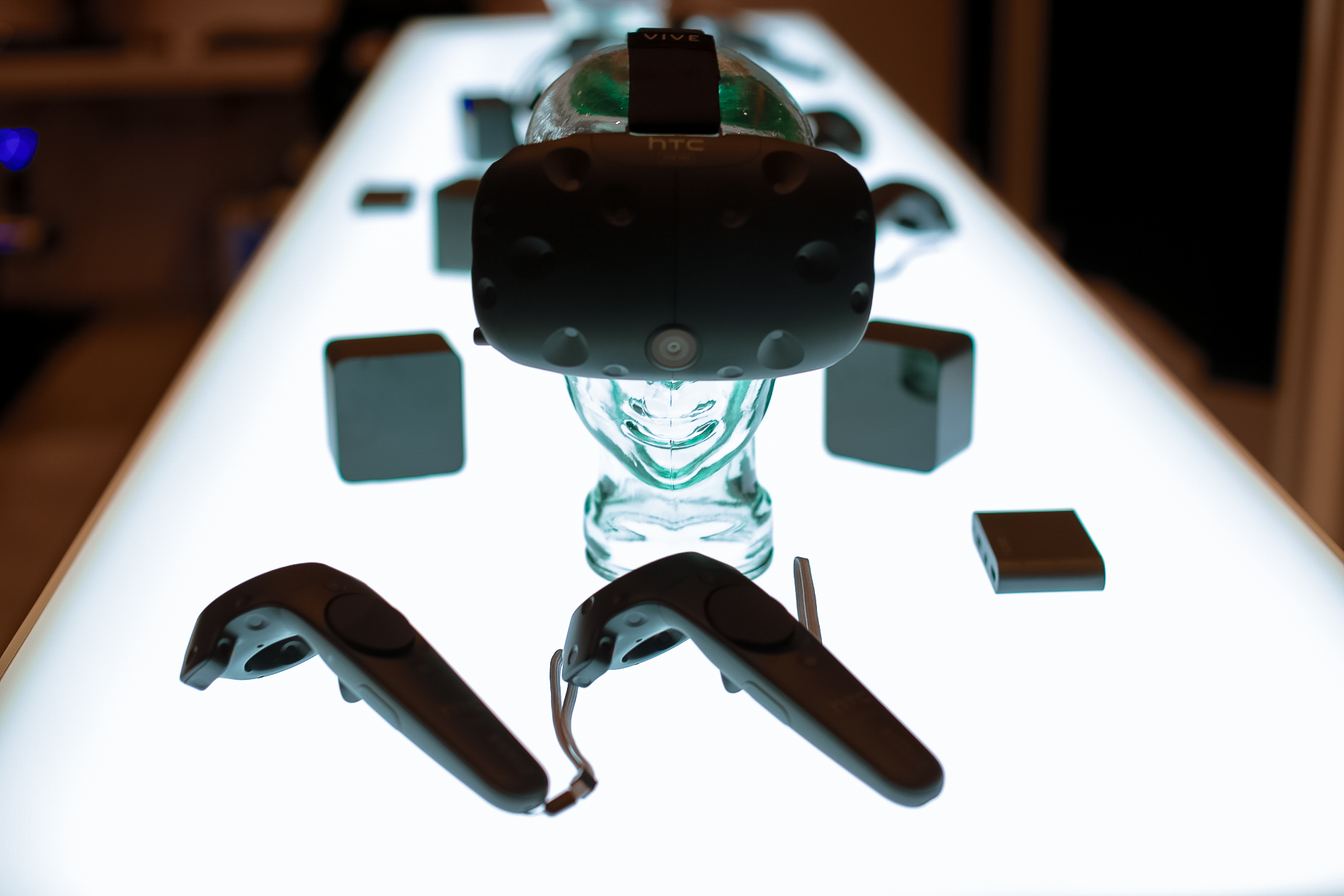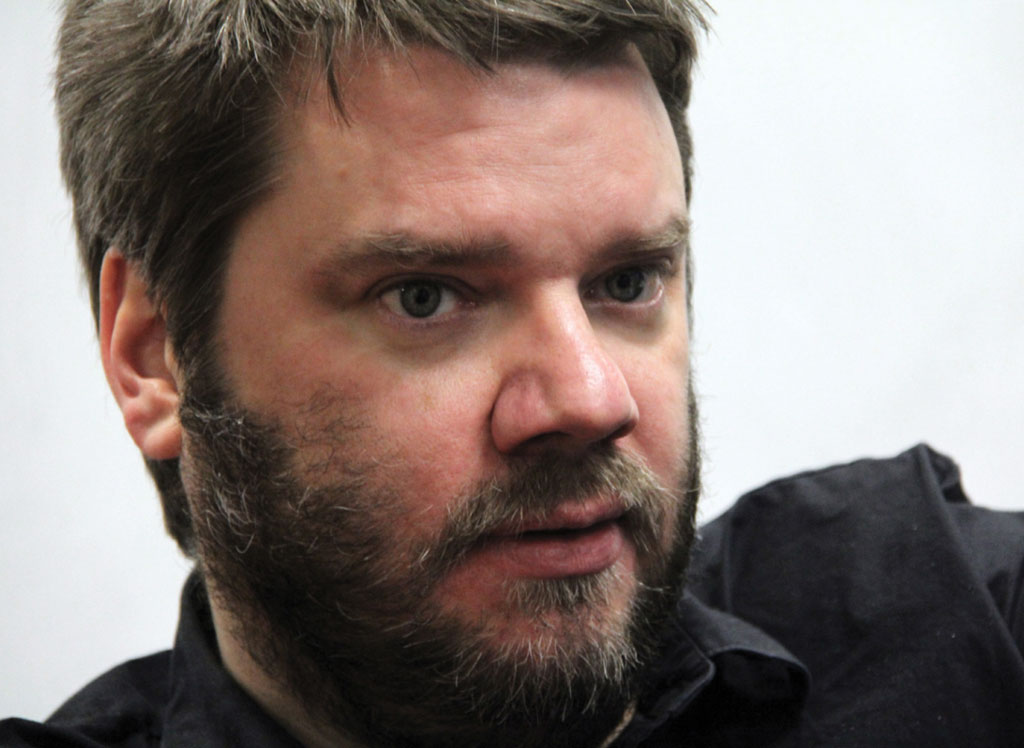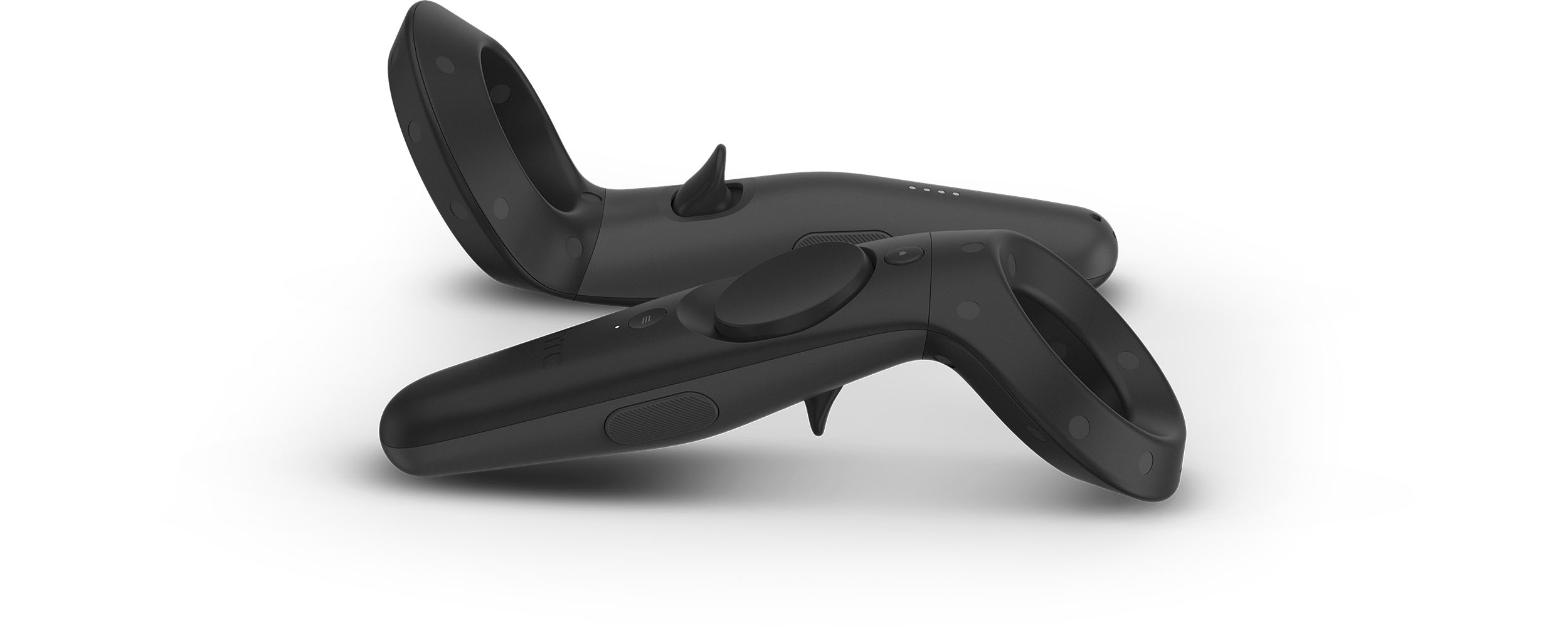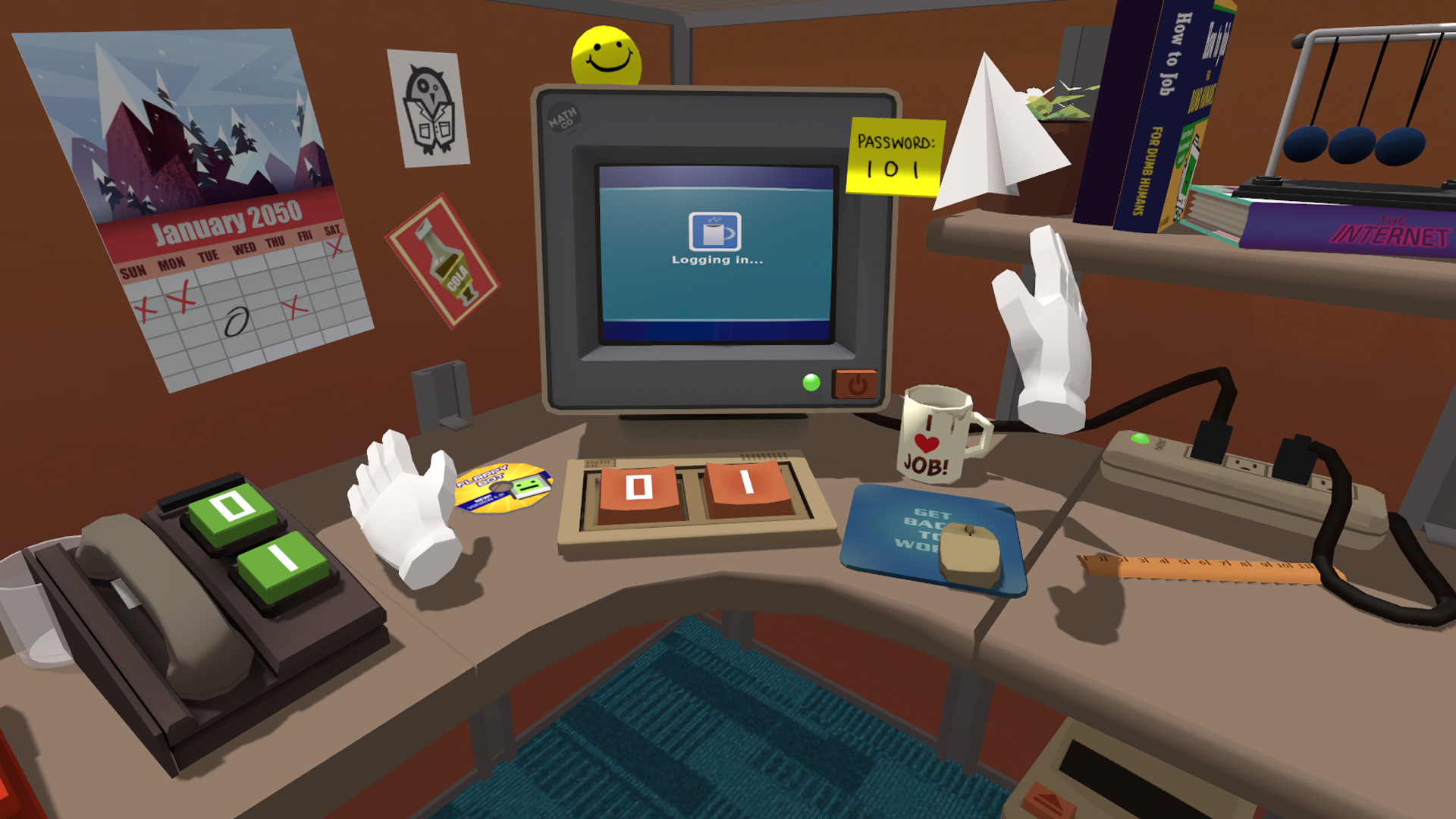We talked to HTC and Valve about what's new, what's ahead for Vive

At CES 2016, HTC and Valve unveiled a new version of their Vive VR headset, the HTC Vive Pre, with a lighter frame and new front-mounted camera so you can see what's happening in the real world. I spent a few minutes with it on my head staring at a blue whale, (see my impressions here), and also spoke with HTC VP Daniel O'Brien and Valve's Chet Faliszek about what's new in this version, and what to expect from the consumer release later this year. That transcript is below, with a summary of my impressions of the new hardware in the video above.
PC Gamer: Starting with the dev kit that you shipped last year and had lots of developers using, what was the big feedback you got from them that helped inform the last eight months of iteration or so leading up to the next one?

Daniel O'Brien, VP at HTC: Well, I wouldn’t say that it was one big thing—I think it was a lot of little pieces of learning from extended periods of use when we originally designed it. You don’t log thousands of hours of use before you give it to the dev community. I think we learned a lot from them in terms of comfort and overall ergonomic design and weight distribution and strap design. It’s all about playtesting and getting feedback from the dev community and the heaviest users, and taking as much of that into account as possible.
We redesigned the headset from the ground up, from the gasket fit and finish, and we’re creating a removable gasket, because we learned we all have different human geometry. We have wide faces, we have narrow faces, and faces that wear glasses with wide and narrow fit, and we wanted to account for all those scenarios. We wanted to account for better strap design and cable management, and the screen brightness. Having that experience, it’s all about improving it overall.
Lots of controller feedback about how to improve the controllers, so we take as much of that feedback from our own testing, our own usage, and then [as much] from the dev community as possible and make the best possible product we can.

PCG: Are there any specifics we can talk about? It’s definitely lighter, noticeably lighter than the last one.
O'Brien: It’s smaller, so in this hardware, just on the headset alone we’ve made it smaller. We’ve made it very durable in terms of what we know human behavior is with the headset and the potentials of—
Keep up to date with the most important stories and the best deals, as picked by the PC Gamer team.
PCG: Smacking into cabinets?
O'Brien: We don’t you expect you to do that. [laughs] I think it’s more that we expect you to take it off and, [I’ve said before] ‘that was amazing’ and I dropped it. We’ve redesigned the strap, we’ve improved the screen display system. We’ve implemented mirror correction improvement, and that’s kind of like a turning window field—if you looked at the dev kit one and then this Vive, you’ll see that there are noticeable differences in the visual experience in the brightness, crispness, and really just feeling like you’re there in the space with your content.
It’s just that much more visually appealing and comfortable. We’ve redesigned the controllers for better comfort balance, ergonomics, trigger design. We’ve improved the base stations as well. We’ve made those smaller, more compact, quieter, lighter. We’ve given them better ability to actually be mounted.
PCG: You have a regular tripod style mount on the Lighthouse base stations right now, right?
O'Brien: Yeah, we went with a universal screw mount on the top on the back and bottom so you can mount it very easily form universal products.

Chet Faliszek, Valve: If you need to. I just put it on a shelf. In my living room I have one on a wall and one sitting on bookshelf.
PCG: The Vive Pre is kind of a dev kit round two you guys are going to be shipping out, with the consumer version to follow. Is that consumer version also going to see iteration from feedback from this one, or is it going to be very, very similar to this?
O'Brien: We will definitely take feedback in and we’ve already got this kit out with some developers that have had to update their content that we’re showing here today, and we will continue to take that feedback. It never stops. You never stop learning, especially with something this new. We’ve already learned things that we couldn't fix in time for this one, and we’ll continue to improve it as we get to the commercial version.
PCG: In terms of HTC and Valve working together, what is the divvying up of responsibilities? Who’s doing what? It was interesting for PC gamers to see Steam VR come out and then see HTC attached to it, and I think everybody is still trying to figure out how this partnership works.
Faliszek: I don’t think there’s a clean line. It’s way messier than that.
O'Brien: It’s really hard to explain.
Faliszek: Especially this late in the game where we’ve worked with each other so much, I don’t think there’s a way to define. Everyone’s helping out with so much.
O'Brien: Yes. Yeah, we do a ton of crossover. Feedback to our engineering teams from a software standpoint. From a hardware design standpoint, there’s feedback. From box design, there’s feedback. We all help each other through the entire process. The goal is for the two companies to bring the best VR to market and that’s what both committed to doing.
Faliszek: We’re here together today and right now I know you guys have a group of HTC at Valve today. It’s back and forth, not like ‘Hey, how’s that thing going?’ Right? There’s a lot of back and forth.

PCG: With the big competition being Oculus, you guys have a very different controller solution to them. They don’t have the Touch launching until sometime in the second half of the year. The Steam VR controller obviously is an integral part of Vive VR, but in terms of the shape and function of them, it’s very different. What lead to the decision to go with a wand form factor, and use the trackpad versus more traditional ABXY button layout or something like that?
Faliszek: To the first point, the competition is virtual reality and the vision everyone has of virtual reality. That’s what we’re trying to deliver. I don’t care if there’s 30 companies making something else or no one. We have a goal that we’re trying to do, and this is a dream we’ve had of what virtual reality is right? Walking around, standing in the middle of content, engrossed, having it all around you. That’s what we want to deliver so that’s what we’re going for.
Having that kind of simplicity allows you to just to hand it to somebody else and say, ‘Oh my god, try this.'
The controllers were all about when you have that localized locomotion and people can walk around, and you say, ‘hey, go look at that lighthouse over there,’ and you’re in VR, you just walk over and look at it, you just interact with it. You don’t have to tell somebody, ‘use the left stick to move and the right stick to look,’ right? They can just go do that.
So, once we’re there and have this ease of use why would we add complication to that? And one of the things we do when someone starts working with VR—they wanna think ‘more buttons, more buttons’ but the reality is you can use less and less buttons because things can become natural. The whole world is your UI.
We use the example of, we have a bow and arrow game and you get the arrow from the quiver on your back. Now, no one has to memorize that key. There’s a stealth game where we’ll be showing at the end of the month, where you can lean around corners. You know how you lean around a corner?
PCG: You lean around a corner.
Faliszek: Yeah, so all of a sudden all of these things that you've always done in games and had to remember—hold down this button while you click the left stick—it goes away and it just works. So having that kind of simplicity allows you to just to hand it to somebody else and say, ‘Oh my god, try this.’ It’s this crazy thing, right? Just like in Tilt Brush, right? You have a pallet here and a trigger here, and it’s pretty simple to know what to do. You can do really complex things with that. And so that’s been the really interesting thing and the goal there was to just make that really easy to use. You could do it before because they were tracked in this space, but now even when they’re outside the space, you can put the controllers down if there’s an experience that uses just one controller. If it’s one controller, put it down, pick it up. It’s all about that ease of use of getting it where it’s just this natural thing for you.
PCG: Taking one of your hands off can be a little creepy, though.
O'Brien: Yeah, if you leave your hand in space and walk away from it, it’s a little…
Faliszek: The worst case for me was pre-GDC, the fishing game from DoveTail. It was jitters before a big event, and I went fishing for an hour-and-a-half in their game, and it was really relaxing. And I’m like, 'Oh, I have to play some SkyWorld,' and I’m like, 'Before I go to SkyWorld I gotta get rid of this big fishing rod, because SkyWorld has a little wand you use, but I can’t use this big fishing rod.' My brain was so convinced I was holding a big fishing rod. I literally had to [take the headset off] and go, ‘OK, OK, OK.’

PCG: When I interviewed the Job Simulator guys a few months ago, they talked about one of their friends demoing the game and excitedly at the end dropping the controllers onto a fake table, except there wasn’t a table there, so they just fell to the ground.
Faliszek: That’s when you win. That’s success, right? Because you built it so realistically.
PCG: Success is a broken controller, maybe. A sacrifice.
O'Brien: At one point I was crawling and I saw a table and I actually tried to put my hand on the table to pick myself up and I fell forward further. It’s very convincing, very cool.
PCG: Have you guys nailed down any system requirements for being able to run this on the consumer end yet?
O'Brien: Right now we’re just saying for an optimized spec to have a great optimized experience, if you use a 970, if you use a 290 with AMD, you’re going to have a great experience.
Faliszek: And it’s weird to have system requirements for a piece of hardware, but it’s also helpful so developers kind of know what they’re targeting. So you’ll see developers now, actually having beefier systems, because as you’re developing, you’re not always going to care about performance first. The goal is that if you have a 970, the content should run smoothly for you.
PCG: In terms of the improvements you made to the lenses, brightening the screen, is there anything more tech-nerdy you can talk about on that side?
Faliszek: It’s really about all of those things working together and, I think, probably the weirdest misnomer people have is that it’s about resolution, when resolution is really just one part of it. The big goal is pixel density where you’re looking ... Really, it’s about putting it on and seeing that it feels and looks better and brighter—it’s crisp, it’s vibrant colors, right?
PCG: When can we expect the next great Valve VR world that will blow us away?
Faliszek: We’ll announce things when we’re ready to announce things.

Wes has been covering games and hardware for more than 10 years, first at tech sites like The Wirecutter and Tested before joining the PC Gamer team in 2014. Wes plays a little bit of everything, but he'll always jump at the chance to cover emulation and Japanese games.
When he's not obsessively optimizing and re-optimizing a tangle of conveyor belts in Satisfactory (it's really becoming a problem), he's probably playing a 20-year-old Final Fantasy or some opaque ASCII roguelike. With a focus on writing and editing features, he seeks out personal stories and in-depth histories from the corners of PC gaming and its niche communities. 50% pizza by volume (deep dish, to be specific).


